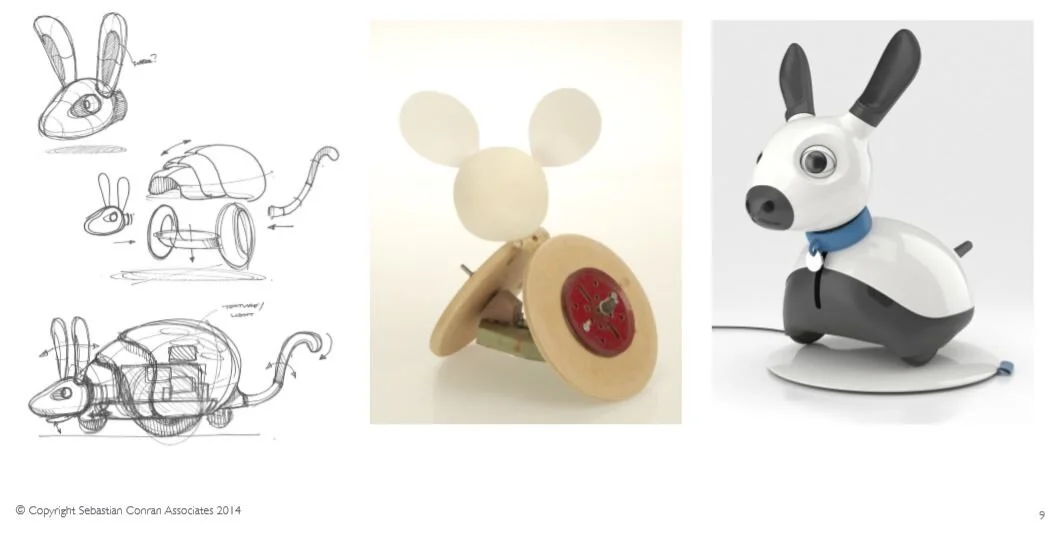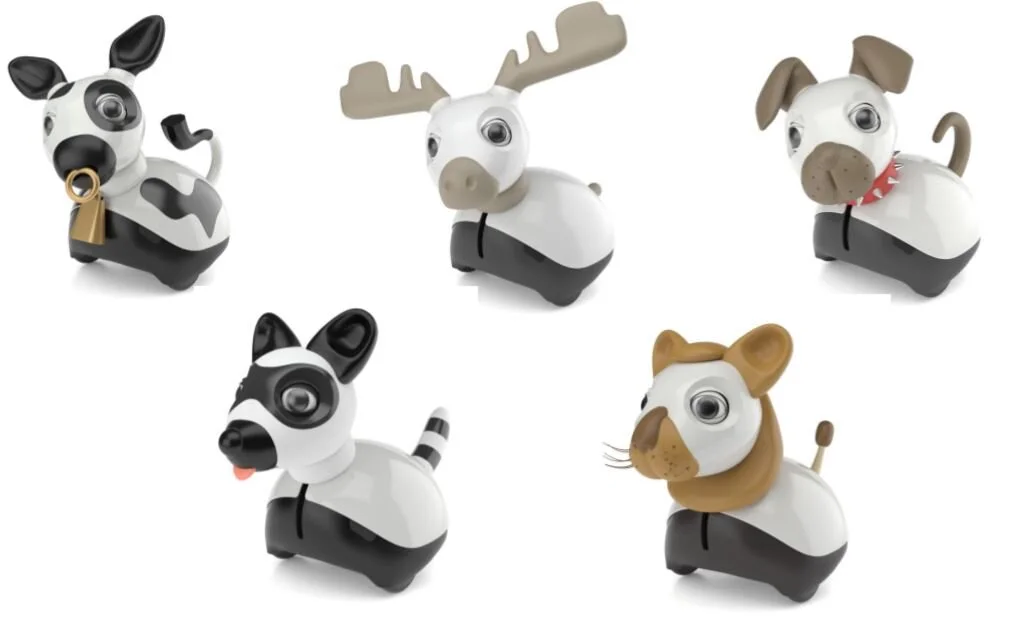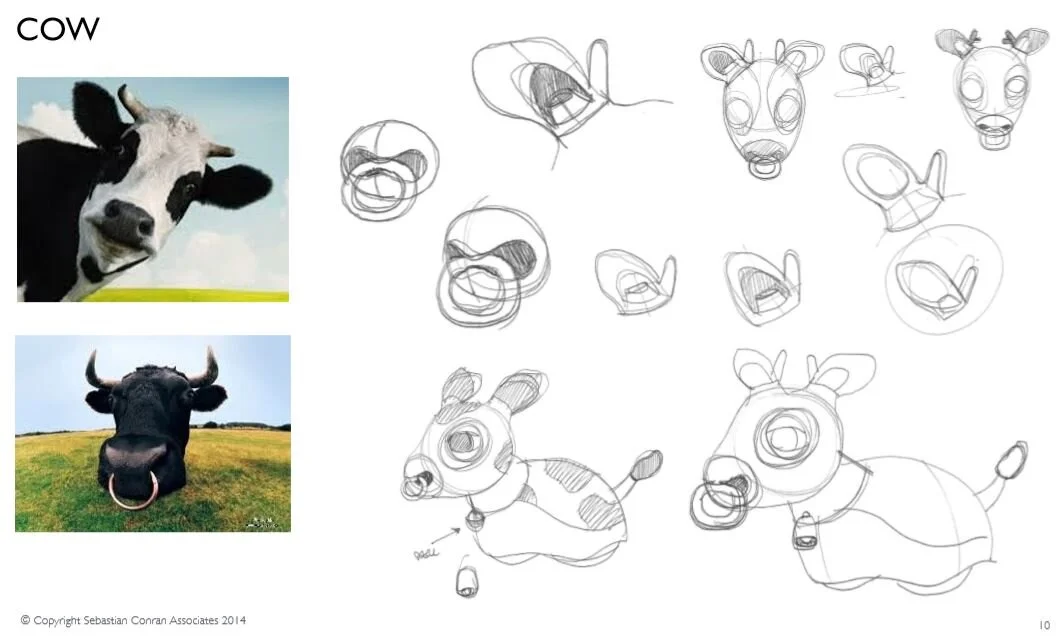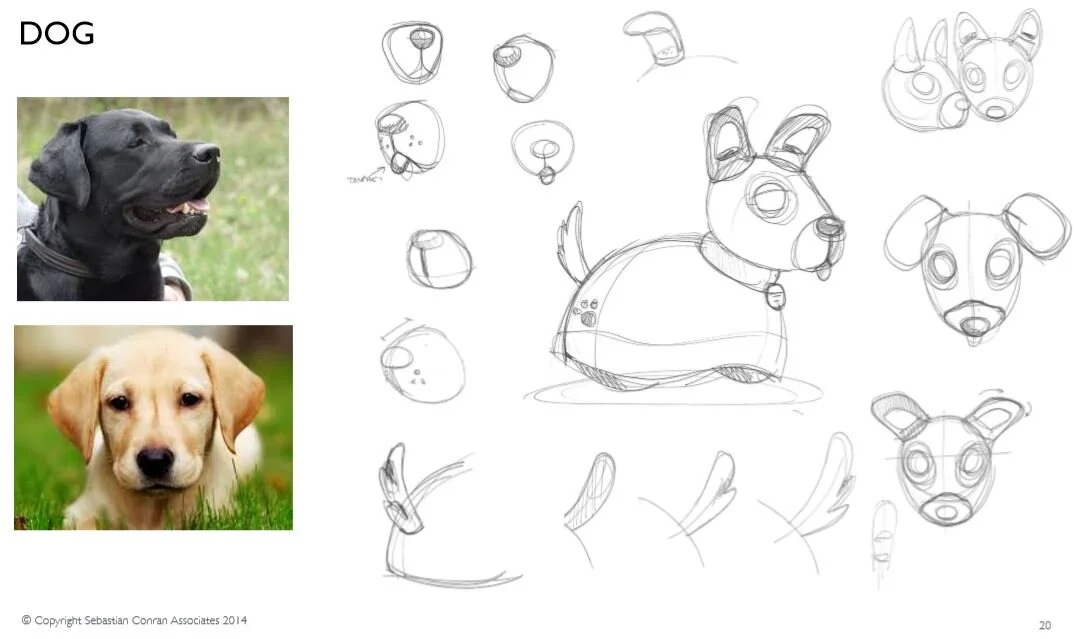MiRo (bioMimetic Robot) is the result of almost 25 years of research and several years of design that has developed into a highly specified, low-cost, flexible robot platform that could be used in university research. Most recently, it evolved into 3rd generation MiRo-E, a flexible device suitable for education and social care research. Sebastian Conran, Consequential Robotics Designer and Co-Founder explains the thinking behind designing MiRo.
Design is a funny word
Some people think ‘design’ means how a thing looks. But designing even an every-day object involves joining the dots between usefulness, usability, functionality, appearance, finish, fabrication, materials, brand, and the manufacturing constraints of production tooling, assembly and cost. All the while, the designer must weave into this product, a personality and a ‘behaviour’ to ensure that the user experience is both pleasurable and satisfying. It is essentially about creating an experience and perception of the product for the user; whether it is a teapot, a smartphone or a car. The device itself may just have a basic function, but as human beings we perceive and experience the world through our senses. Seeing, touching, hearing, or smelling - life is a sensual activity. Human life is ultimately an experience that is sensually perceived.
Therefore, designing an emotionally engaging robot is a discerning balance between how its personality will be emotionally perceived and its functionality. For Consequential Robotics, it is this interaction between the human and the machine that is our primary focus. This is particularly important when designing devices that will be in contact with humans in a domestic setting, compared to industrial devices that will remain largely unseen.
Why robot pets might make the best robots
If we had designed a robot that looks completely abstract, people will initially find it more difficult to understand and relate to. Humanoid robots on the other hand, may be expected to have some of the complex qualities of a human being, which is not yet feasible so this can lead to disappointment. However, people have limited expectations from pets, but they still find them emotionally engaging. Thus, designing a robot that looks and behaves a bit like a domestic pet offered both a rewarding user experience and met the expectations of how an animal-like robot should behave. For example, we all talk to our pets so we may expect a robot that responds to voice commands.
Since the artificial intelligence in MiRo is modelled on biomimetic-brain-based architecture, it seemed to make sense for it to mimic nature in its form and personality. We reasoned that we like our robots to be friendly, so that people will enjoy interacting with it and not feel intimidated. Mainly due to its size, it was decided to make it resemble a small animal that would be familiar and appealing to humans. Our design team looked at various options for small domestic animals that people would be familiar with and understand. We concluded that young puppies, bunnies and kittens were especially endearing, as their heads were in larger proportion to their bodies compared to the adult creatures.
It is easier to draw a dragon than a dog
Surprisingly, we found that, as soon as we focused on a single animal type, people felt slightly uneasy because it was too realistic. This phenomenon is known as ‘uncanny valley’. Also, as the Japanese proverb goes: ‘It is easier to draw a dragon than a dog’, as no one knows what to expect from a dragon or what it looks like. Abiding by this concept, we chose salient features from various mammals and combined them into a single hybrid form. Dogs and cats are some of nature’s predators, whereas cute little rabbits or deer are prey; one key difference between them is the positioning of the eyes - the aggressor needs eyes close together to stereoscopically judge pouncing distance, whereas the prey needs 360º vision to see a threat coming. That is why dogs have evolved with their eyes close together and rabbits have them on the side of their head. When you look at MiRo you will notice that, although the eyes appear to be on the side of the head, we have the cameras facing forward to aid stereoscopic navigation.
A wagging tail is also a universal sign of happiness in most dogs. Blinking eyes are a common way of conveying reactions, as are ears that can also be a key indicator of what animals are feeling - we have probably all seen deer or rabbits swivel their ears alert to danger, using stereo sound to locate the origin of a noise. Therefore, you’ll see many of these animal-like features on MiRo today.
This is the first part of a two part post. Click here to read more.
Post Author
Sebastian Conran, Consequential Robotics Co-founder






